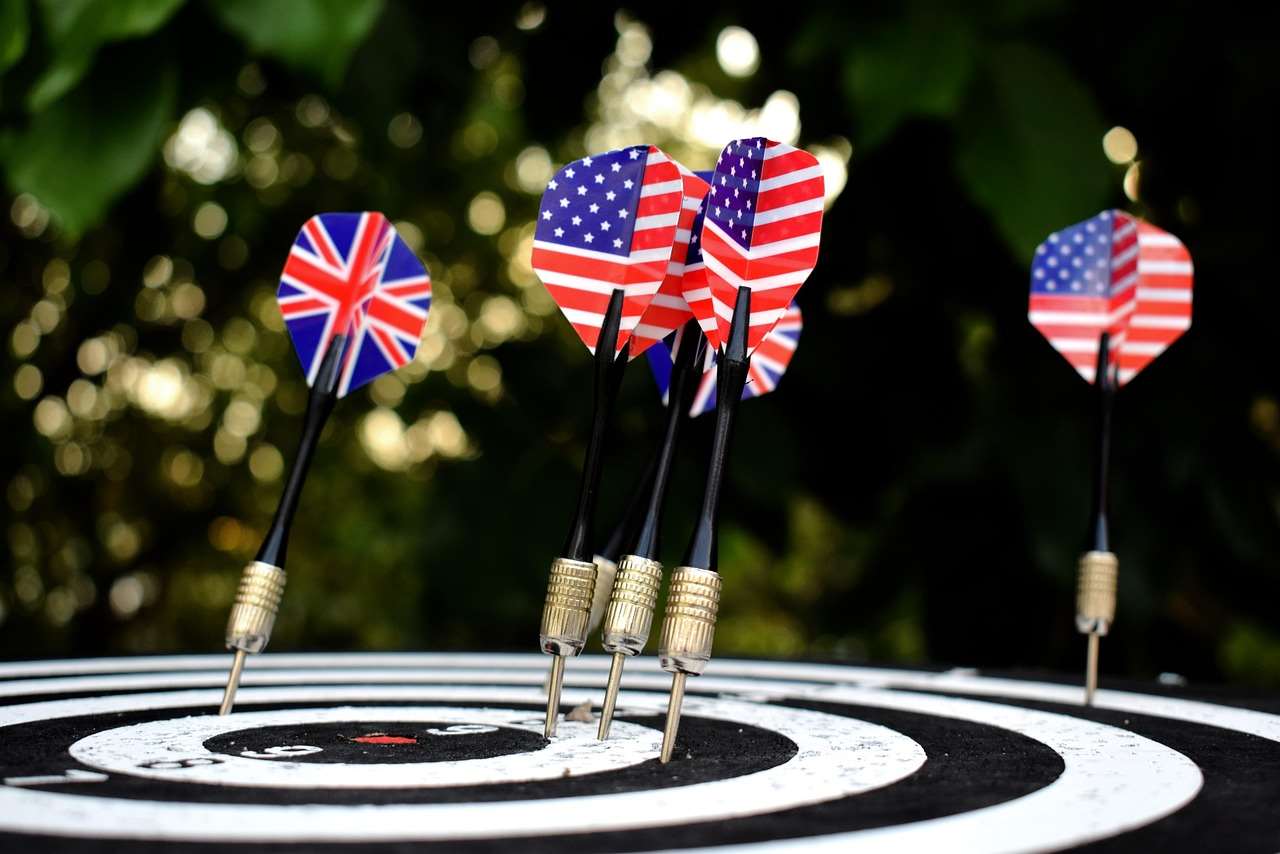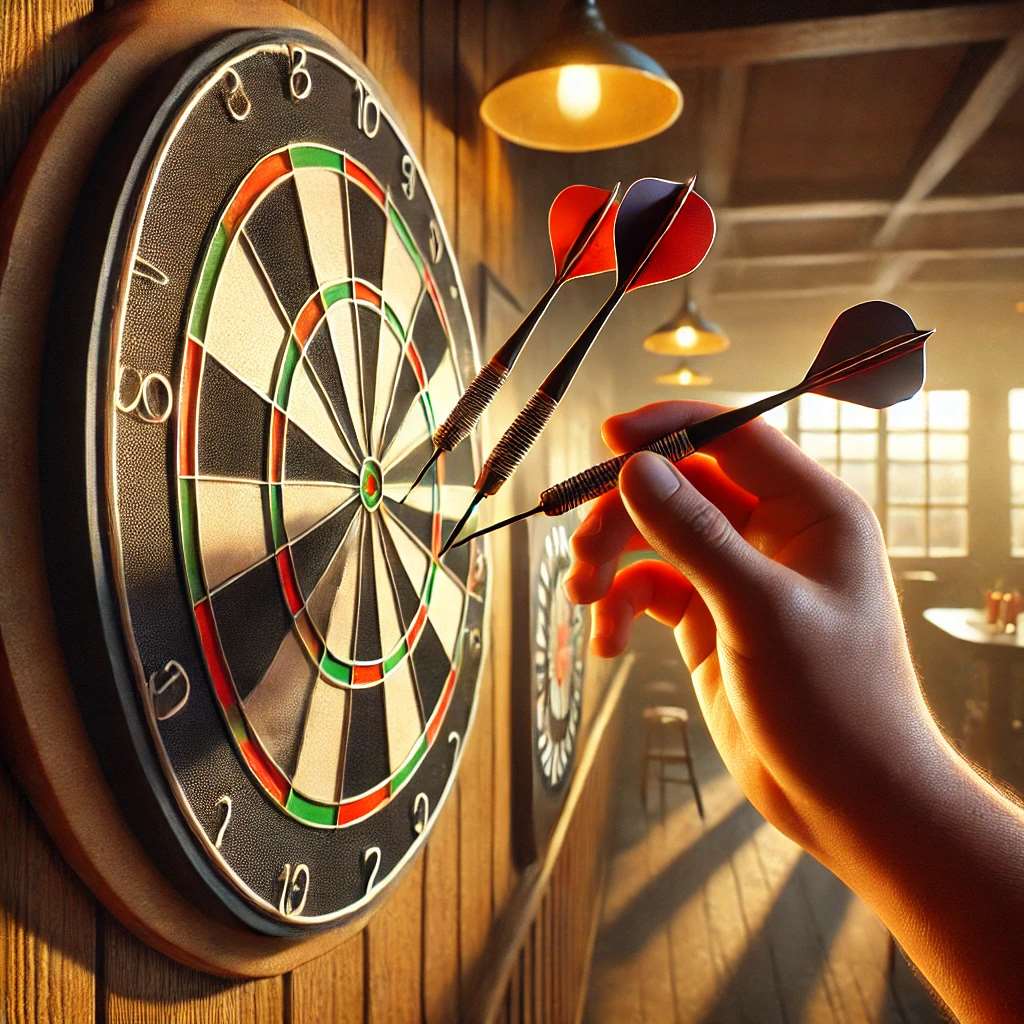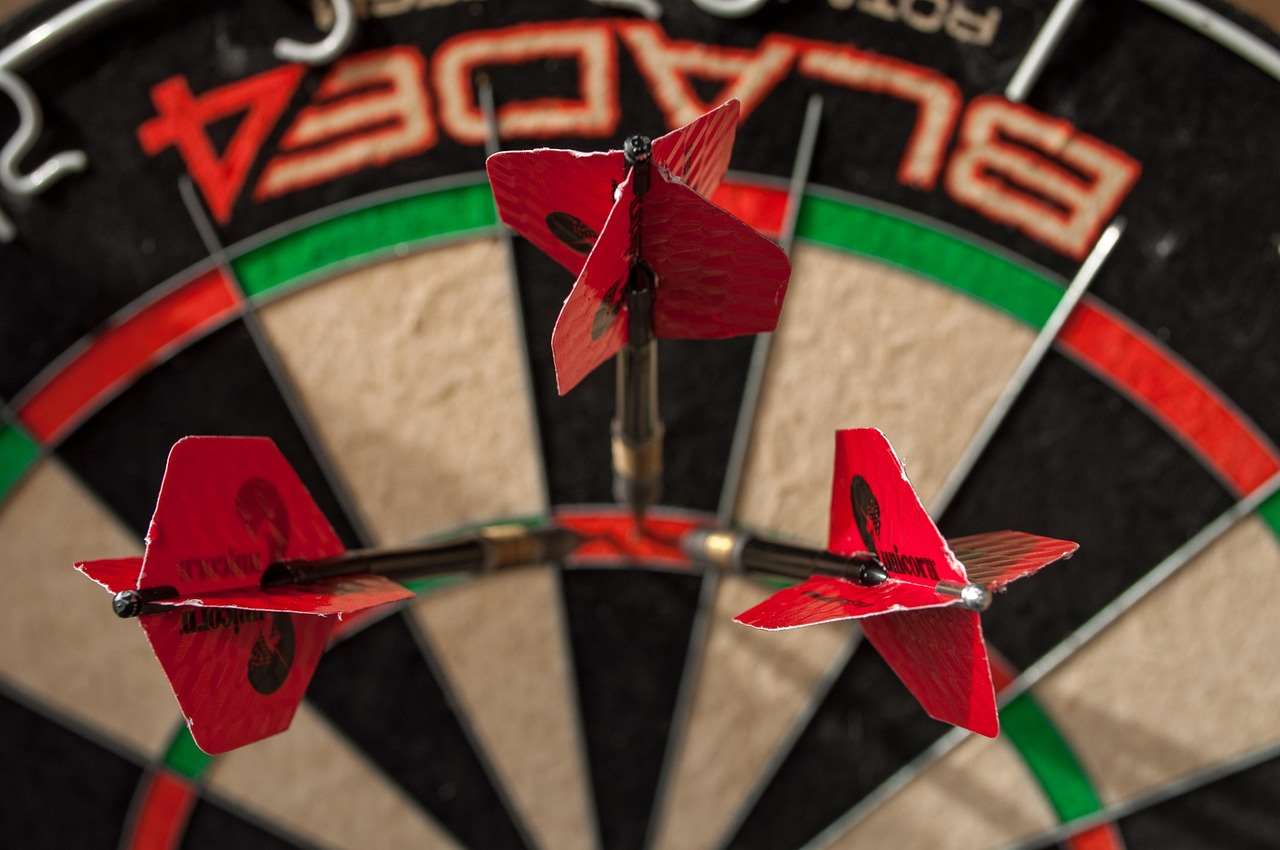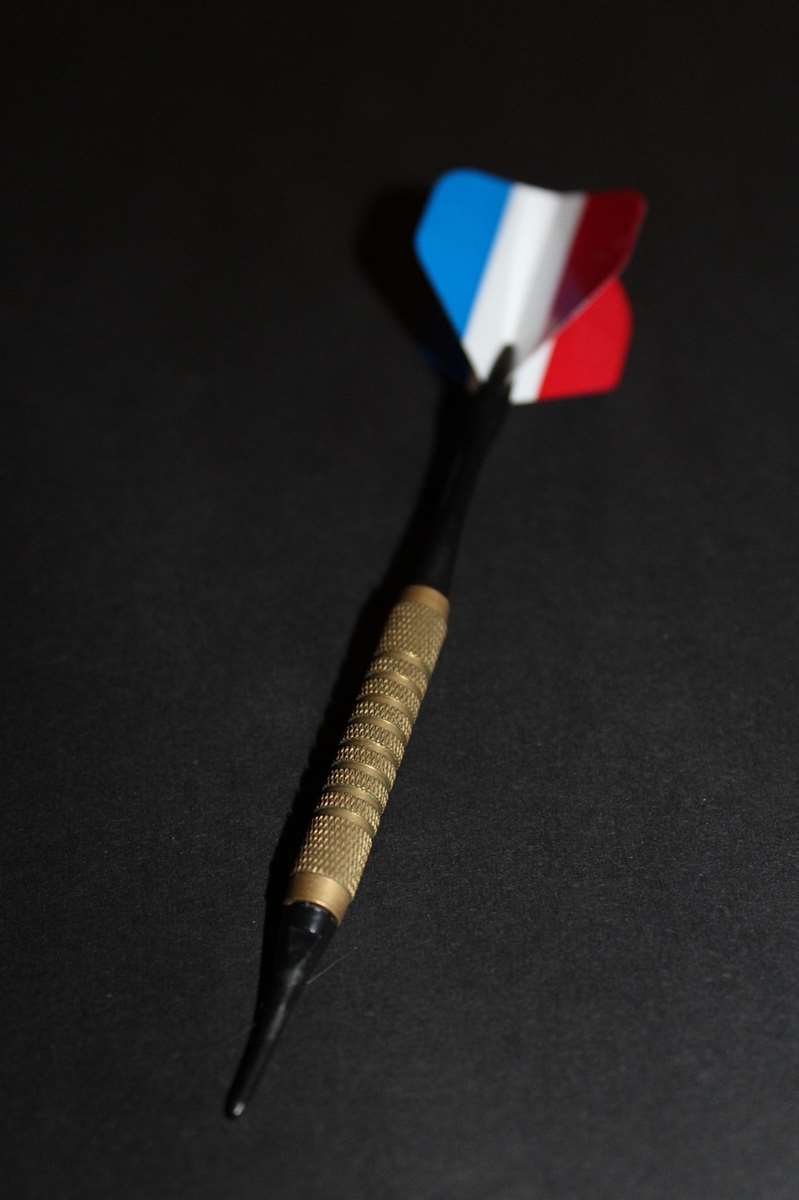Finding the best dart shaft material for you hinges on understanding your throwing style and preferences. Ultimately, the ideal material depends on your individual needs; this article will guide you through the options and help you make the best choice.
⚠️ Still Using Pen & Paper (or a Chalkboard)?! ⚠️
Step into the future! The Dart Counter App handles all the scoring, suggests checkouts, and tracks your stats automatically. It's easier than you think!
Try the Smart Dart Counter App FREE!Ready for an upgrade? Click above!
Choosing the right dart shaft material is crucial for consistent performance and a comfortable throwing experience. Factors such as weight, durability, and grip all play a significant role. This guide will explore various materials, discuss their pros and cons, and provide you with the information you need to confidently select the best dart shaft material for you.
Best Dart Shaft Material for You: A Comprehensive Guide
The market offers a variety of dart shaft materials, each with unique characteristics. Understanding these differences is key to selecting the perfect shaft to enhance your game. We’ll dive deep into the most popular choices, examining their strengths and weaknesses to help you make an informed decision. The best dart shaft material for you isn’t a one-size-fits-all answer; it’s about finding the perfect match for your individual playing style and personal preferences.

Nylon Shafts: The Popular Choice
Nylon shafts are incredibly popular among dart players due to their combination of durability, affordability, and flexibility. They offer a good balance between stiffness and give, making them suitable for a wide range of throwing styles. However, they can be prone to slight warping over time, especially with heavier darts or aggressive throwing styles. This is easily mitigated with careful maintenance and mindful throwing habits.
Aluminum Shafts: Lightweight and Durable
Aluminum shafts are a great choice for players seeking a lightweight yet durable option. They’re more resistant to bending and warping than nylon shafts, making them a longer-lasting investment. While aluminum shafts are often slightly more expensive than nylon, their increased durability often justifies the price. The lightweight nature of aluminum contributes to a more effortless throw, allowing for greater control and consistency. This can be particularly beneficial for players who prefer a faster release.
Carbon Fiber Shafts: The High-End Option
For players who demand the ultimate in performance, carbon fiber shafts are the top choice. Incredibly lightweight and incredibly strong, these shafts offer unparalleled durability and stability. Their stiffness minimizes unwanted flex during your throw, resulting in exceptional accuracy. The high price tag may be a deterrent for some, but for serious players seeking a competitive edge, the investment is well worth it. Remember to maintain these properly, as mentioned in our guide on Darts Equipment Maintenance Customization.
Plastic Shafts: Budget-Friendly and Versatile
Plastic shafts represent the most affordable option available, making them a great choice for beginners or those on a tight budget. While not as durable as nylon or aluminum, they offer decent performance for casual play. Their flexibility can actually benefit newer players, reducing the impact of slight inconsistencies in their throwing technique. However, for more serious players, the lower durability might become a concern over time. Plastic shafts, while economical, may require more frequent replacement.
Factors to Consider When Choosing the Best Dart Shaft Material for You
Selecting the best dart shaft material for you isn’t just about the material itself; several other factors play a crucial role in making the right decision.
Weight and Balance: The Key to Consistency
The weight of the shaft significantly impacts the overall balance of your dart. A heavier shaft can help stabilize the dart in flight, particularly beneficial for players who struggle with accuracy. Conversely, a lighter shaft might be preferable for players who prefer a faster release. Experimenting with different weights is often the best way to find the optimal balance for your throwing style.

Shaft Length and Thickness: Finding the Right Fit
The length and thickness of your shaft can influence how the dart feels in your hand and affects your grip. Longer shafts can provide greater stability but might feel less comfortable for some. Thinner shafts provide a more delicate feel, potentially increasing sensitivity, while thicker ones offer greater grip and stability. Consider the dimensions of your flights and your grip preference; for an idea on how to protect your flights, check out this article on flight protector and flight stability.
Grip: Enhancing Control and Precision
Many dart shafts are designed with textured surfaces or grooves to provide a better grip. The type of grip can significantly affect your control and precision. Some players prefer a more pronounced grip for added stability, while others prefer a smoother surface for a less intrusive feel. Consider your grip style and how much friction you need for optimal control.
Durability and Longevity: Investing in Quality
The durability of the shaft plays a significant role in the long-term cost. While inexpensive shafts might seem appealing initially, frequent replacements can negate the cost savings. Consider the potential lifetime cost and select a shaft material that offers adequate durability for your throwing style and intensity.

Personal Preference: The Ultimate Decider
Ultimately, the best dart shaft material for you is the one that feels most comfortable and performs best for your individual playing style. Experimenting with different materials and trying various combinations can help you find the perfect match. Don’t be afraid to try out different options to discover what suits your needs and preferences.
Maintaining Your Dart Shafts: Prolonging Their Lifespan
Proper maintenance can significantly extend the lifespan of your dart shafts, regardless of the material. Regular cleaning and careful handling will prevent damage and keep them in optimal playing condition. Consider checking out our comprehensive guide on signs to replace dart equipment and dart equipment lifespan.
Cleaning Your Dart Shafts
Regularly clean your shafts with a damp cloth to remove dust, dirt, and any sticky residue. Avoid using harsh chemicals or abrasive materials, as these can damage the surface. For stubborn marks, a mild detergent can help. Always dry them thoroughly before using your darts. The importance of maintaining your dart equipment cannot be understated; a well-maintained set can significantly impact your game’s consistency and longevity.

Storing Your Darts
Proper storage helps protect your dart shafts from damage. Avoid storing them in direct sunlight or extreme temperatures, as these can cause warping or discoloration. A dart case or a dedicated storage container can keep your darts organized and protected.
Frequently Asked Questions (FAQs)
What are the most common types of dart shafts?
The most common types are nylon, aluminum, and carbon fiber. Each offers unique properties regarding weight, durability, and feel. As discussed, the best dart shaft material for you truly depends on your needs.
How often should I replace my dart shafts?
This depends on the material and your playing intensity. Nylon shafts may last several months, while aluminum or carbon fiber might last much longer. Regular inspection is crucial. Look for signs of wear and tear, such as bending, warping, or cracking, to determine when replacement is necessary. Our guide on dart equipment repair vs replacement cost chart could also be helpful.
Can I repair damaged dart shafts?
Minor damage like scratches might be cosmetic, but significant bends or cracks generally necessitate replacement. Attempting repairs can often weaken the shaft further, potentially affecting your throw and causing further damage to your darts or your dartboard. See our information about long dart shafts pros cons for more context.
What is the difference between a long and a short dart shaft?
The differences affect the overall balance and weight distribution. Long dart shafts pros cons should be considered when choosing your darts and shaft lengths. Longer shafts generally offer greater stability but can affect your throwing style. Shorter shafts can feel more agile and allow for faster releases.
Are there any other factors I should consider?
Yes! Your personal grip, preferred throwing style, and overall budget should all be considered. Experimentation will help you determine the best dart shaft material for you.

Conclusion
Choosing the best dart shaft material for you requires careful consideration of several factors, including your throwing style, desired weight, and budget. While nylon, aluminum, and carbon fiber represent the most popular choices, exploring the pros and cons of each material is vital. Remember, personal preference often plays the most significant role. Don’t hesitate to experiment with different materials to discover what truly enhances your game. By understanding the nuances of each material and considering your personal playing style, you can confidently select the perfect dart shafts and unlock your full potential on the oche.
Start experimenting today and elevate your dart game!
Hi, I’m Dieter, and I created Dartcounter (Dartcounterapp.com). My motivation wasn’t being a darts expert – quite the opposite! When I first started playing, I loved the game but found keeping accurate scores and tracking stats difficult and distracting.
I figured I couldn’t be the only one struggling with this. So, I decided to build a solution: an easy-to-use application that everyone, no matter their experience level, could use to manage scoring effortlessly.
My goal for Dartcounter was simple: let the app handle the numbers – the scoring, the averages, the stats, even checkout suggestions – so players could focus purely on their throw and enjoying the game. It began as a way to solve my own beginner’s problem, and I’m thrilled it has grown into a helpful tool for the wider darts community.